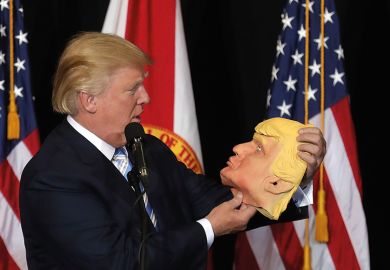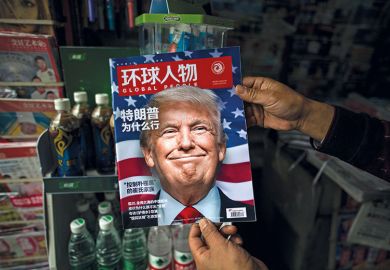Nearly 40 per cent of US universities are seeing declines in applications from international students, and recruitment professionals report “a great deal of concern” from students and their families about visas and perceptions of a less-welcoming climate in the country, according to a survey conducted in February by six higher education groups.
More than 250 American colleges and universities responded to the survey, which was initiated in response to concerns among international educators “that the political discourse surrounding foreign nationals in the US leading up to the November 2016 US presidential election could be damaging to international student recruitment efforts”, according to a press release about the initial, top-line findings.
Thirty-nine per cent of institutions responding to the survey reported a decline in their total number of international applications across both the undergraduate and graduate levels. Another 35 per cent reported an increase, and 26 per cent reported no change.
While a majority of institutions are not seeing decreases, steady increases in international applications and ensuing enrolments have become the norm for many colleges. And many institutions have based their financial plans in part on sustained increases in enrolments of full-paying international undergraduates.
The highest reported declines involved applications from the Middle East. Thirty-nine per cent of universities reported declines in undergraduate applications from the Middle East, while 31 per cent reported declines in graduate applications. Autumn enrolment numbers from the region will likely be hard hit by President Trump’s executive order barring entry by nationals of six countries from the Middle East and Africa – including Iran, the 11th-leading country of origin for international students in the US. But it's also worth noting that the number of students from Saudi Arabia, the third-leading country of origin, had already been dropping prior to the presidential election, a decline many colleges attributed to changes in the Saudi government’s foreign scholarship programme. The number of Saudi students in the US fell by nearly 20 per cent in autumn 2016 compared with the fall before, according to student visa data.
Many universities responding to the survey also reported drops in applications from China and India, respectively the top two countries from which international students in the US hail. The two countries, together, account for nearly half of all international students in the US.
A quarter of universities responding to the survey reported declines in undergraduate applications from China, and 32 per cent reported declines in Chinese graduate applications. As for India, 26 per cent reported declines in undergraduate applications from the country, and 15 per cent reported declines in graduate applications.
At the same time, universities reported hearing concerns from students and families, particularly those from the Middle East, Asia and Latin America. The press release about the findings notes that the most frequently cited concerns are:
- “Perception of a rise in student visa denials at US embassies and consulates in China, India and Nepal.”
- “Perception that the climate in the US is now less welcoming to individuals from other countries.”
- “Concerns that benefits and restrictions around visas could change, especially around the ability to travel, re-entry after travel and employment opportunities.”
- “Concerns that the executive order travel ban might expand to include additional countries.”
The survey was conducted by the American Association of Collegiate Registrars and Admissions Officers, the Institute of International Education, NAFSA: Association of International Educators, the National Association for College Admission Counseling, and NACAC's internationally focused subgroup, International ACAC. More than three-quarters of institutions responding to the survey – 77 per cent – are concerned about yield, that is, how many applicants accept an admissions offer and enrol.
This is an edited version of a story that first appeared on Inside Higher Ed.
Register to continue
Why register?
- Registration is free and only takes a moment
- Once registered, you can read 3 articles a month
- Sign up for our newsletter
Subscribe
Or subscribe for unlimited access to:
- Unlimited access to news, views, insights & reviews
- Digital editions
- Digital access to THE’s university and college rankings analysis
Already registered or a current subscriber?








